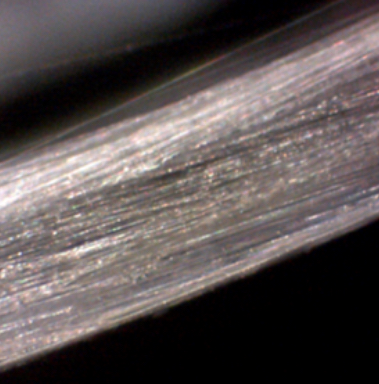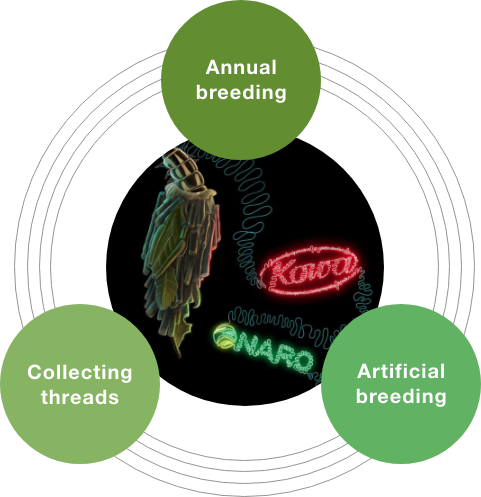Eumeta variegata is a common native species in Japan,
and their larvae, commonly called bagworms, produce silk threads.
We have discovered the “strength” of this thread based on its unique features as a fiber.
Bagworms are larvae of a kind of Psychidae moth, which are widespread in all zoological environments except for the polar regions and deserts. About 1000 species exist in the world, and about 50 of these species can be found in Japan.
Bagworms produce thread composed of silk protein as silkworms and spiders do.
Shortly after hatching, bagworms construct cases called “mino” by weaving leaves and twigs together with their silk thread. They stay in and move with these cases until they become adults.
Most bagworms are small, making cases less than 10 mm long. However, there are many large bagworms such as the larvae of Eumeta japonica (case sizes of 30 – 55 mm long) and Eumeta minuscula (case sizes of 20 – 35 mm long), which are widely found in Japan.
Some species of bagworms eat lichen, moss, fungi, and algae, but many large bagworms eat leaves, stems, and tree bark. As they are generally polyphagous, they are often categorized as pests.
※ Family Psychidae belongs to Superfamily Tineoidea, a primitive superfamily in Suborder Ditrysia in Order Lepidoptera.
(References)
Toyohei Saigusa, Mika Sugimoto 2013, “Psychidae” pp.136-155, The Standard of Moths in Japan 3, Gakken Educational Publishing
Mika Sugimoto 2009, “A comparative study of larval cases of Japanese Psychidae (Lepidoptera) (2),” 17-29 Japanese Journal of Entomology (New Series) 12(1),
Provided by NARO


| Breaking strength | 2 GPa |
|---|---|
| Elastic modulus | 28 GPa |
| Breaking elongation | 32 % |
| Fiber diameter | approx. 10μm |
|---|---|
| Toughness | 364MJ/㎥ |
|
The structural origin of the strength We have clarified a causal relationship between its dynamic characteristics and its structure.
Structural change in the bagworm silk occurred during tensile deformation was investigated using time-resolved X-ray scattering technique.
・ Identified the primary structure ・ Identified the crystal modification and crystallinity
・ Identified the hierarchical structure |

|
|---|




